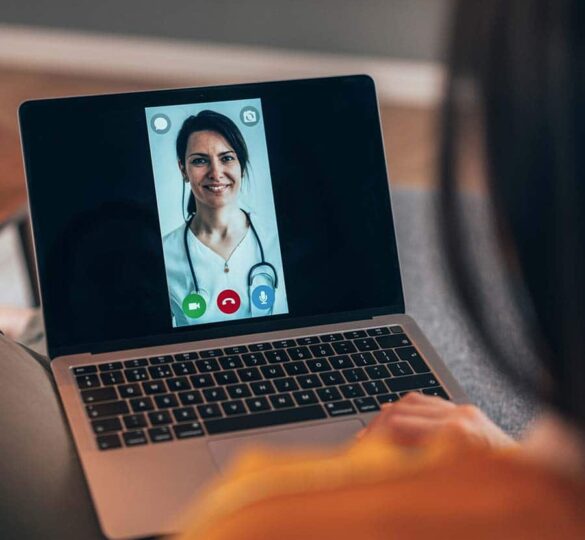Telemedicine: Promising Future for Glaucoma Management
Tele-glaucoma can improve access to care, it can help with disease detection and monitoring, and it can help with ongoing glaucoma management.

Telemedicine has a lot of potential to help in glaucoma. Population studies have shown that more than 50% of people in different populations have undiagnosed glaucoma. So you could think of tele-glaucoma as a way to improve access to care. It can help with disease detection. It can help with disease monitoring, and it can help with disease management.
The future of glaucoma management is using technology. This can include technology in mobile apps, mobile devices, and software to examine patients, and to monitor patients. Patients can monitor themselves and send that data to the doctor.
There are newer technologies for visual fields that patients can do at home and there are virtual reality (VR) visual field tests that could be fun for patients to do at home. In the future, telemedicine will improve disease management as eye doctors will have a continuous flow of information regarding each patient’s disease status and that individual’s glaucoma management.
Tele-Glaucoma Patient Benefits
The patient will benefit a lot. Patients will be more engaged in their own disease management. They’ll understand their disease more, what needs to be done, and why. Their doctor(s) will have continuous information about their intraocular pressure and about their visual function from tests that the patient can do at home. It will be more efficient for patients to do some of their own testing at home instead of coming to the eye doctor’s office and staying for two or three hours to do all their eye exams and visual field tests. For these reasons, telemedicine for glaucoma will be a multifaceted benefit for the patient.
Tele-Glaucoma Challenges and Artificial Intelligence
There are challenges. The number one challenge to the adoption of telemedicine for glaucoma is healthcare reimbursement (for the doctors). These technologies require a lot of infrastructure and a lot of data processing, as well as IT (information technology) professionals to manage it. And as long as the government does not reimburse for it, it’s hard for a physician to acquire this technology and maintain it and process the data that’s coming.
The second challenge is patient engagement. The patient might want to be engaged and do their own eye tests, but some patients are not interested in monitoring themselves at home.
The third challenge is data processing. With that much information, the data from all of their patients’ home eye tests coming towards the doctor’s office, eye doctors and their staff do not have enough hours in the day to manage all of that data. For that reason, artificial intelligence (AI) is going to be the key to telemedicine for glaucoma management.
I believe the future is going to be telemedicine merged with artificial intelligence to better manage disease for glaucoma patients.
Watch the Video
Article by Lama Al-Aswad, MD, MPH. Posted on June 19, 2020.

Lama Al-Aswad, MD, MPH
Lama Al-Aswad, MD, MPH is an associate professor of ophthalmology and Director of the Tele-Ophthalmology Initiative at Columbia University Medical Center.